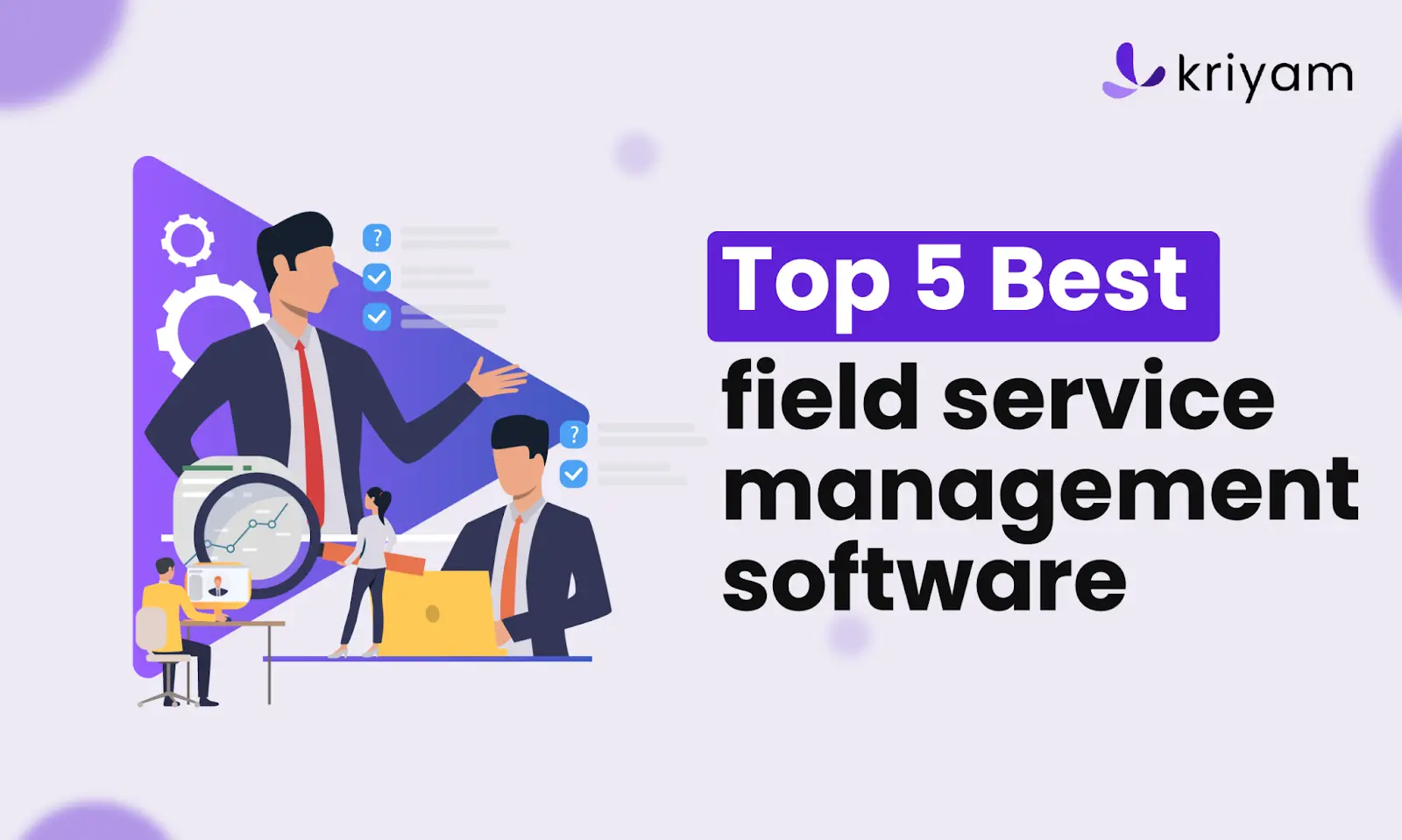Top OCR Solutions for Mid-Sized Companies: Streamlining Background Verification and Onboarding in 2025
Sharlyn Bedi | 8th July, 2025
min reads
Sharlyn Bedi | 8th July, 2025 | min reads

Imagine hiring faster, smarter, and with fewer headaches—no, it's not a magic trick, but the power of Optical Character Recognition (OCR) technology. In an era where efficiency can make or break a mid-sized company, selecting the right OCR solution is crucial for streamlining background verification and onboarding. This blog will navigate you through essential OCR tools for 2025, tailored for HR tech, fintech, and the gig economy—helping you make informed decisions, avoid costly pitfalls, and embrace a future where administrative bottlenecks are a relic of the past.
Introduction
In the modern landscape of business operations, mid-sized companies are increasingly finding themselves at a crossroads. The need for swift and accurate processing of documents is becoming more critical, especially in sectors like HR tech, fintech, and the gig economy. This is where Optical Character Recognition (OCR) technology steps in as a game-changer.
OCR has this unique ability to transform scanned documents and images into editable and searchable data, which can significantly enhance background verification and onboarding processes. Imagine the tedious task of manually entering data from resumes or identification documents—OCR technology can automate this, reducing human error and saving precious time.
Yet, with technological advancement comes its own set of challenges. One of the most pressing for these companies is the decision-making hurdle: how to choose the right OCR solution among a myriad of options available in the market. Each solution offers a different set of features, and understanding which one aligns best with a company's needs is no small feat.
Perhaps, it's this very complexity that makes the decision so crucial. A well-chosen OCR solution can streamline operations, improve accuracy, and ultimately contribute to a company's growth and efficiency. But with so many choices, where does one even begin? This ambiguity in choice reflects the broader dilemma facing mid-sized companies today.
Understanding OCR and Its Importance
Optical Character Recognition, or OCR, is a technology that has quietly transformed the way businesses operate, especially for mid-sized companies. At its core, OCR converts different types of documents—such as scanned paper documents, PDF files, or images captured by a digital camera—into editable and searchable data. This might sound straightforward, but the implications are profound.
For mid-sized businesses, adopting OCR technology means streamlining operations, reducing manual data entry, and minimizing errors. Imagine the tedious process of inputting data from piles of paper. With OCR, what used to take hours can be done in minutes. It's not just about saving time; it's about reallocating human resources to more strategic tasks.
The relevance of OCR is underscored by its market growth. The global OCR market is projected to reach USD 32.90 billion by 2030, according to HyperVerge. Such growth indicates a widespread recognition of its value across industries.
Use Cases in Background Verification and Onboarding
When it comes to background verification and onboarding, OCR is a game-changer. Consider the hiring process in human resources. An HR department might receive hundreds, if not thousands, of resumes and identity documents. OCR technology swiftly processes these documents, extracting relevant information and ensuring accuracy.
In the fintech industry, OCR helps in verifying customer identities, which is crucial for compliance and fraud prevention. Imagine a fintech company onboarding new clients: OCR can quickly scan and verify IDs, bank statements, and more, making the process seamless.
The gig economy also sees substantial benefits. Platforms that manage large volumes of freelance workers use OCR to efficiently handle contracts and identification documents. This allows for faster onboarding and fewer delays, keeping operations smooth.
While these scenarios highlight its strengths, the potential of OCR is vast and still unfolding. From HR to fintech to the gig economy, OCR is quietly reshaping how businesses handle data. It's not just a tool; it's a strategic asset.
Key Comparison Metrics for Evaluating OCR Solutions
Choosing the right Optical Character Recognition (OCR) solution can feel like navigating a maze. But, focusing on key metrics can make the decision easier and more effective.
Ease of Use
First up, ease of use. It might seem obvious, but a user-friendly interface can make a world of difference. If employees struggle to navigate the system, efficiency drops. Imagine a cluttered dashboard; it’s overwhelming. So, prioritize solutions that are intuitive and straightforward. This ensures everyone, not just the tech-savvy folks, can onboard quickly.
Accuracy
Then there’s accuracy. This is crucial. It’s about trust, really. You need to know that the data captured is reliable. Take Rossum AI, for instance, boasting a 96% accuracy rate. That’s impressive, and it’s not just about numbers. High accuracy reduces errors, ensuring data integrity and saving time on manual corrections. It’s like having a dependable colleague who rarely makes mistakes (Dialzara).
Integration Capabilities
Next, think about integration capabilities. This is a big one. Companies often have existing systems, like SAP or Oracle. Your OCR solution needs to fit in smoothly, like a puzzle piece. If it doesn’t, you might face disruptions or, worse, a complete overhaul of your processes. Seamless integration minimizes these risks and enhances workflow efficiency.
Compliance and Security Considerations
Let’s not forget compliance and security. In today’s world, data protection is non-negotiable. Familiarize yourself with standards like GDPR, SOC 2, and HIPAA. These aren’t just acronyms; they’re safeguards for your data. GoodHire, with its customizable features, is a great example of enhancing compliance, keeping you on the right side of data laws (SoftwareSuggest).
Balancing these metrics can be tricky, but they’re essential for finding an OCR solution that truly fits your company’s needs. It’s not always straightforward, but taking the time to evaluate these factors pays off in the long run.
Top OCR Tools for Mid-Sized Companies
Rossum AI OCR
Rossum AI OCR offers a unique approach with its template-free document processing. This means it doesn't rely on predefined templates to extract data, which is a significant advantage for businesses dealing with a variety of document types. Its high accuracy in recognizing text makes it a favored choice among mid-sized companies, particularly those that handle diverse documentation regularly. The flexibility in processing different formats is something to consider, especially if your company is in a dynamic industry.
HyperVerge OCR
HyperVerge OCR stands out with its AI-powered model that promises seamless integration and customization. The ability to tailor the tool to fit specific business needs can be a major draw for mid-sized companies looking to streamline their operations. Integration isn't just about technology fitting together; it's about how smoothly it becomes part of your existing processes. If customization is crucial for your business strategy, HyperVerge might offer the adaptability you're seeking.
DOKKA
DOKKA is more than just an OCR tool; it's an entire accounting automation platform. It has garnered high user satisfaction, as highlighted by reviews on G2. For companies aiming to automate their accounting processes, DOKKA offers a comprehensive solution that could simplify daily operations. Sometimes, it's not just about the technology but how it fits into the broader picture of your business goals.
GoodHire
GoodHire provides customizable packages that can make onboarding processes more efficient. This is particularly valuable for mid-sized companies that may have varying needs when it comes to background verification and employee onboarding. The ability to adjust packages according to specific requirements can lead to a smoother and more effective hiring process. It’s about finding a solution that aligns with your unique business needs, rather than a one-size-fits-all approach.
Best Practices for Implementing OCR in Mid-Sized Businesses
Integrating Optical Character Recognition (OCR) into the workflows of mid-sized businesses can significantly boost efficiency. But how does one go about this integration? First, it's crucial to understand the specific needs of your business. Start by identifying the areas where OCR can make the most impact, such as data entry or document management. Once these areas are pinpointed, map out how OCR can be interwoven into existing processes. This might involve selecting the right software, setting up the necessary infrastructure, or even reshaping workflows to accommodate this new technology.
Next, there's the human element. Training staff is key. After all, technology is only as good as the people using it. Employees need to be comfortable with the new systems, so investing in comprehensive training sessions is essential. This isn’t just about teaching them how to use the software, but also helping them understand the benefits it brings. When staff see how OCR can ease their workload or reduce mundane tasks, they’re more likely to embrace the change. Adapting processes might feel daunting initially, but gradual shifts can lead to a smoother transition.
Case Study: Successful Implementation
Let's consider the example of a mid-sized company, TechServe Inc., which successfully integrated OCR solutions into its operations. Before OCR, TechServe struggled with slow processing times and frequent errors in their document handling systems. The management decided to adopt an OCR solution tailored to their needs. The results? Dramatic improvements. Processing times were slashed in half, and errors dropped by nearly 40%. Employees found their workloads reduced, allowing them to focus on more strategic tasks. In this case, OCR was not just a tool but a catalyst for broader organizational efficiency. This example highlights the potential gains for other mid-sized businesses considering OCR implementation.
Conclusion
Choosing the right Optical Character Recognition (OCR) tool is crucial, especially for mid-sized companies aiming to enhance their background verification and onboarding processes. The right tool can significantly streamline operations, saving both time and resources. It's not just about selecting any OCR solution; it’s about picking the one that aligns perfectly with the company’s specific requirements.
Perhaps it might seem overwhelming at first, with so many options available. But taking the time to assess your business's unique needs is a necessary step. Think about what features are most important—speed, accuracy, or maybe ease of integration with your current systems. Once you've identified these needs, exploring demo options can be incredibly beneficial. It’s like taking the car for a test drive before making a purchase. This way, you can see firsthand how a solution performs in real-world scenarios.
Moreover, the potential benefits of implementing the right OCR tool are substantial. Improved efficiency can lead to faster processing times, which means your business can onboard new clients or employees quicker than before. This not only enhances internal operations but also provides a competitive edge in the marketplace. In an ever-evolving business environment, staying ahead often means adopting technology that can adapt and grow with your company.
In the end, while choosing an OCR solution may not be the easiest decision, it's one that promises to deliver significant returns in efficiency and competitive positioning. So, take the plunge, evaluate your options carefully, and embrace the potential for a more streamlined future.
About the author
Sharlyn Bedi
Junior Content Strategist
Sharlyn Bedi | Junior Content Strategist
A passionate writer with a knack for automation and process optimisation. Through clear, actionable insights, her content is best for leaders to stay updated on latest trends on technology and automation.
Interests: Business Automation, Process Optimization, Digital Transformation
Content Overview
Share
FEATURED
Automation
Top 5 Best Field Service Management Software in 2025
Best Field Service Management Software
Shreyas R
27th November, 2023



